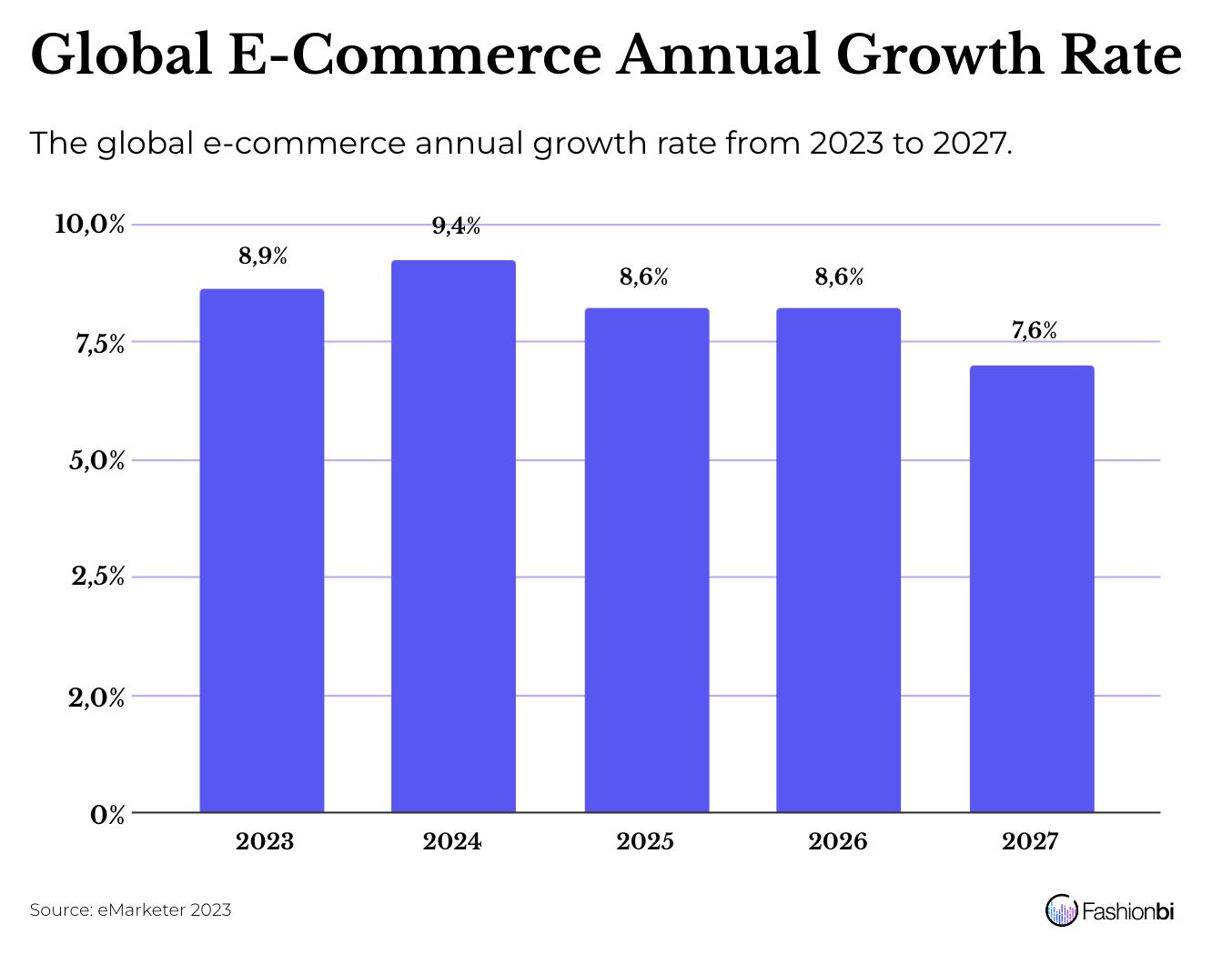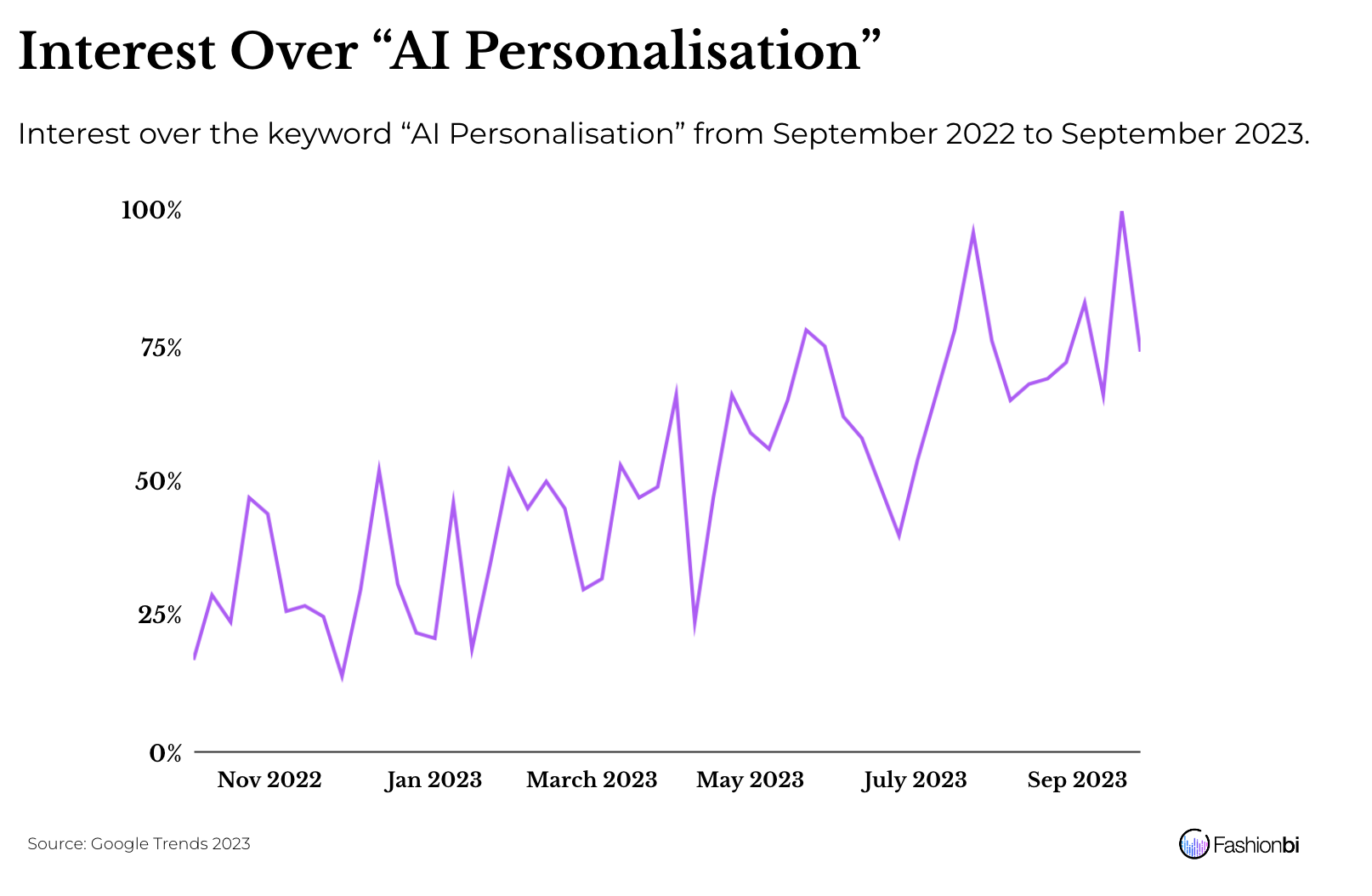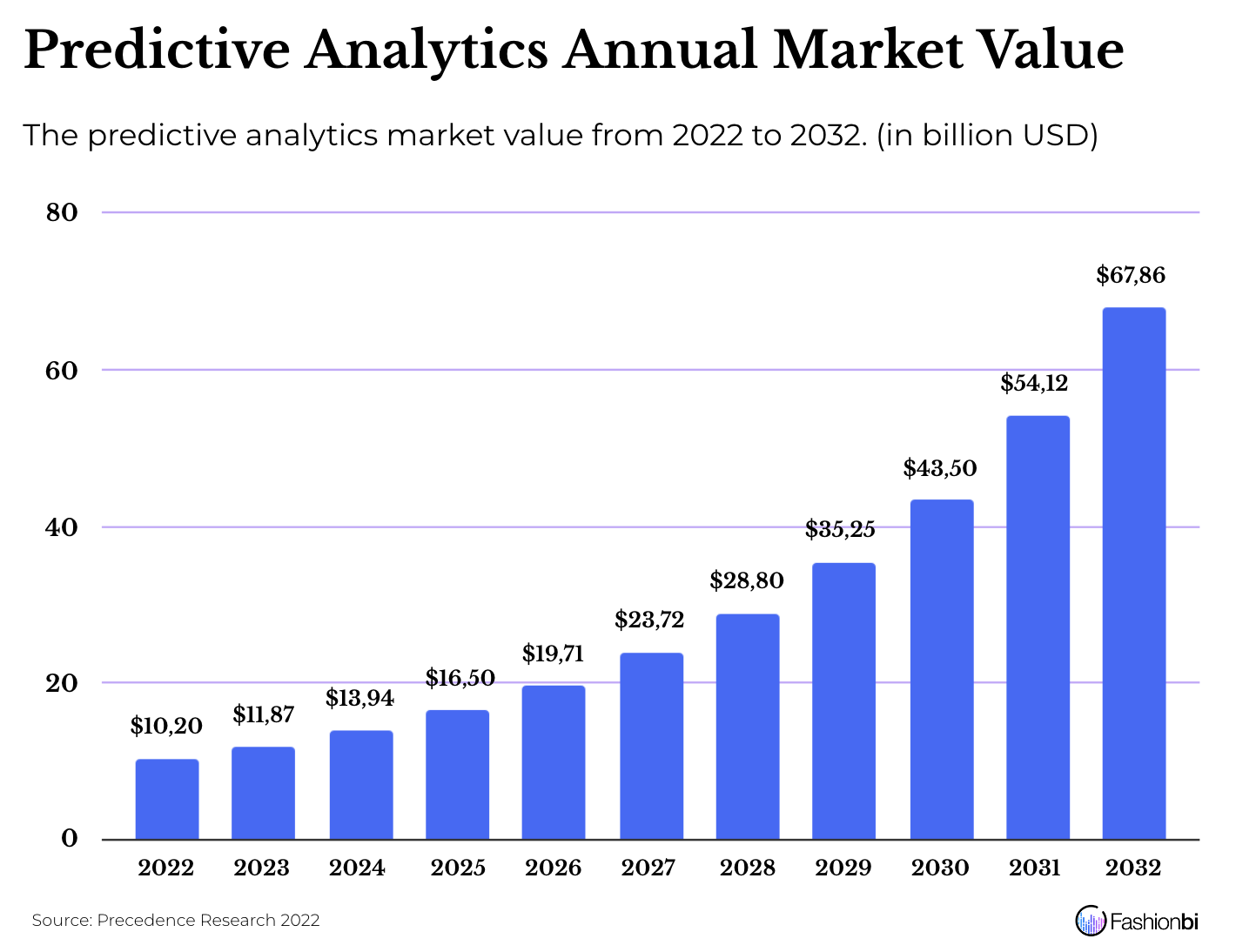Table of contents
Even with the decline in the growth rate in 2023, the E-commerce sector has been and will continue to be an important component of the retail world. It will grow even further in the following years thanks to the digital-driven young generation. The global e-commerce market sales (that includes all the categories) are expected to touch $7,5 trillion by the year 2026. The largest hike in sales of global e-commerce is predicted to happen in 2024 with a 38,9% increase.

To top their games, the brands and e-retailers have to up their game by being more experimentative. With social media apps dominating the online channel market, online shopping is evolving to be less transactional, and more predictive and discovering.
Improved Virtual Discovery
With the resurgence of physical stores, online retailers are pressured to provide a mesmeric experience to their customers. The latest image and AR technology have been a great support to the retailers to homogenise participation and open new doors in the sector. The traditional text searches are many years-old components to be used by online shoppers. Over 12 billion individuals are opting for Google image searches every month.
The key strategy to enhance visual discoverance is to implement a strong ground in the digital discovery sector by collaborating with tech companies such as Snapchat which is a primary in the AR field, and Google which introduced a generative AI-driven shopping experience for its Shopping Graph.
In June 2023, Zalando GmbH launched a body measurement tool that allows its customers to get recommendations on the ideal sizes by uploading two images of them. The US beauty brand Ulta Beauty has introduced some initiatives like a virtual web experience named GLAMlab that integrates serendipity with digital knowledge. Until 2022, the label provided its customers the access to experiment with over 4.000 products.
In August 2017, ASOS came up with Style Match which gave access to its customers to take screenshots and adjust the image to focus on the desired products and use the image to discover the product in the ASOS catalogue. Similarly, Luisaviaroma offered its customers the tool to search a product by random product screenshots they took somewhere else. They have uploaded the screenshot on the search and the website will suggest the same and similar products.
3D and AR Replacing Real Photoshoots
Nowadays, brands and e-tailers are using 3D and augmented reality technology to substitute the real images of the products. By implementing this strategy, they can save investment on the product photoshoots and enable swifter availability of the products on the market. For instance, Giorgio Armani used 3D AR technology to present its Prima Baguette on the official website. By collaborating with Google, Burberry was able to give the 3D view of the product preferred by the customer. Adidas focused on offering its customers to virtually try on its footwear using AR technology instead of merely seeing the product in an image.
AI for Product Searching on Social Media
Many companies are familiar with virtual vision and object identification such as drones and surveillance cameras. Amazon stores would be a viable example as they utilised object recognition software to define the product that a customer would pick and put in their basket. With this data, it will target the customer with their desirable product list. Companies like Runway and Adobe have improved their ability to seek AI to detect and select an object on an image for their users. As AI chatbot usage increased, firms such as Meta have started experimenting with AI to get more interesting results. Mark Zuckerberg is on a mission to create a team to build generative AI tools including Instagram filters, artificial personas, and other features in Instagram and WhatsApp. Recently, Meta released an AI tool called “Segment Anything Model” or “SAM” that enables the users to design a cutout and/or segment of any object present in an image by drawing around the item or clicking the nearer point.
A Jump From Personalisation to Individualisation
The brands are expected to shift from targeting mass to being more individualised and unique by 2025. This change is driven by the oscillating customers who want their purchasing experience to be curated with their swinging emotions and needs. Around 80% of the consumers will more likely purchase when the experience is personalised and 60% will more likely repeat the same purchases.
The main strategy to master this phenomenon is to utilise and invest in Artificial Intelligence which can support e-tailers and brands with a massive database to individually curate the online storefront. With the help of UX, they can design an interactive environment. As a result, it will increase traffic retaining and provide a unique experience to the consumers.
Since the launching of Bullseye in 2022, Marks & Spencer has been focusing more on investing in first-party data to attain individualisation. Due to the platform, the brand has witnessed an 80% growth in the click-through rate and a 56% increase in add-to-cart rates. Lane Crawford is using AI to send individualised recommendations to the customers by analysing their previous purchases.

Playing with Personal Styles
The young generations are experimental-minded. They want the brands to serve their dependence on the digital field by providing new and unique experiences. To achieve this, the brands and e-tailers have to create a playful environment that gives escapism and encourages their customers to be active in it. It is crucial to come up with a fanciful web design through 3D or UX tools that grab the consumers' attention in a joyful manner.
Clinique is inviting its consumers to playfully experiment with its products through its online beauty area on its website. The users can design their own avatars and go to six different spaces filled with gamified touchpoints.
Instead of assorting with the product types, the brands and retailers can choose to assort them based on one’s personal style and preferences. It assists the customers to connect even more deeply with the brand, encouraging them to understand and regale to its products. Furthermore, it will get the attention of Gen Z who want to experiment with their styles. Social media apps such as TikTok are enhancing consumerism and influencing people to choose their own style over others.
The womenswear label Windsor of the US has joined forces with Stylitics, a platform expertise in merchandising, to design an automated product and styling preferences. The strategy is estimated to increase the average order value to 21% and 23% climb in the units/transaction.
Shoptrue from the US is combining personalised preferences with AI to provide style recommendations to its customers and access to change their style and share it online.
Familiarising with the Care Economy
By or before 2024, the care economy will become a major phenomenon. The people will prioritise care over others for their well-being. This thought is expected to enter the digital world. 79% of US consumers are trying to express their understanding and care for the brand in order to buy from it. This value climbs up to 90% in Asia where the consumers are targeting the brands to speak about the problems that matter to them. They have to create a digital space that has rest stops and make the whole voyage more emotional and thoughtful as the whole world is slowly shifting to a more inclusive environment.
In June 2023, Estée Lauder announced that it is brainstorming more inventive ways to develop various apps and websites. For instance, it introduced an AI-driven voice-empowered make-up assisting app in mobiles that helps people who have visual impairment. By taking this initiative, the company is becoming more inclusive and normalising participation in digital spaces.
A studio named Style Scan introduced an AI-driven visual merchandising technology to adjust the outfit size on the customer’s body visually. Along with that, it also allows the users to style their look and have a photoshoot.
Predictive Commerce
In the US, around 88% are expecting the brands to engage them with new strategies to achieve their expectations. Online labels are changing to be more predictive in e-commerce to draw customers and satisfy their choices even before they know them.
E-retailers have to smooth the customer experience along with the avoidance of errors in predictiveness. In case of unavailability, they have to recommend similar or related products to the customers online with an individualised attitude. They have to seek the help of the predictive analytics market which is forecasted to touch $67,86 billion by 2032.

Before the implementation of the Zegna X launch, Ermenegildo Zegna partnered with an AI predictive analytics channel to collect the data on the customer preferences which made it come up with seamless adaptation and to expect more serious requests when the digital tool is launched.
Labels including Sperry Top-sider, Ralph Lauren, MM LaFleur, True Religion, and Lucky Brand have teamed up with Makersights, a predictive platform, to get updates on the design and development of their products.
Cover Image: Zegna X, courtesy Zegna Group Official Website.